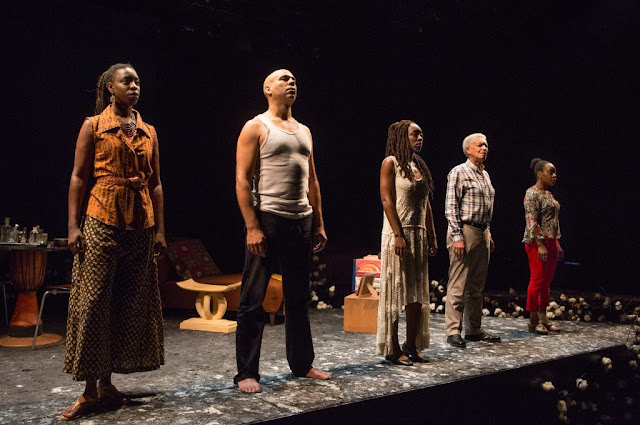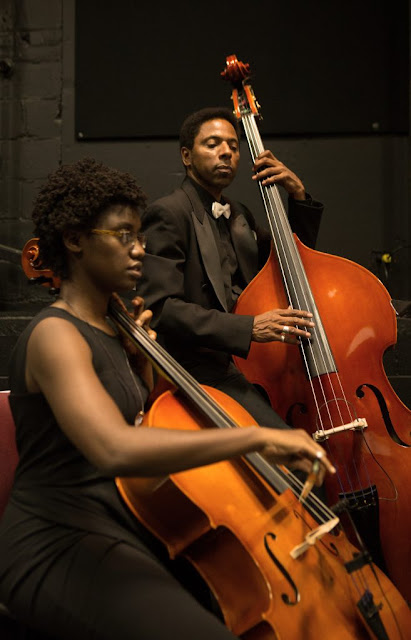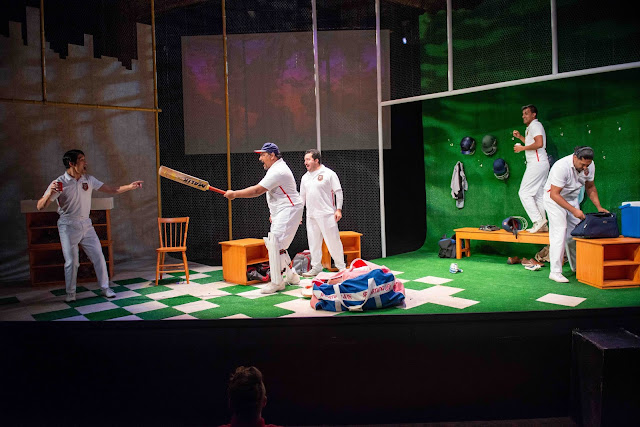PHOTOS BY KYLE PURCELL
The current production of Secret Life of a Mother is a tour de force of exquisitely imagined solo performance, with superb meta-theatrical interventions by the writer director and co-creators throughout. The simple performative act of including the script on-stage, at times reading directly from it as a brief acknowledgement of the process, yet often abandoning its lettered properties and using it as a tissue-like prop submerged in onstage aquariums acting as metaphors to that first journey from the womb to the outside world, as well as as the frequently isolating states women can find themselves trapped within - ultimately reminding spectators that theatre and performance are a kind of birth, never far from their creator, always changing, and always reminding one how difficult and joyous that originary birth, and the life that follows, can be - for women in particular as they are too often left with the bulk of the 'labor' - before during and after.
With the support of Maev Beaty, Anne-Marie Kerr, and Marinda de Beer, Hannah Moscovitch has crafted a very different kind of drama from her previous work. The autobiographical nature is deftly and cleverly split between her and her close friend, Maev Beaty. Moving between the split personas of both Moscovitch and Beaty, Beaty delivers a beautifully layered monologue about the intense joy and fear of bringing a child into the world, and being an artist at the same time. At one point Beaty is called, by Moscovitch, an “Art Monster” who must never feel ashamed that their art might be taking away from their maternal responsibilities. From the vantage point of an audience member and/or ‘fellow’ artist, the responsibilities both artist/mothers take on over the course of this incredible 70 minute performance is a devastatingy beautiful exercise in self examination, poignancy, bitter tears, joy, and comic laughter provoked by some of life’s simultaneously complex /simplest - yet hard won - pleasures.
Beaty is at her usual best as she immediately yet generously lays claim to a script that has been carefully and expertly crafted onstage by Director Anne-Marie Kerr. The use of the two fish tanks - one large one small - creates imaginative and highly effective playing spaces that also stand in as unassuming screens for gorgeous projections of the actual corporeal elements of having a baby. At one point a laptop that Beaty carries around the stage for audience members to see, reveals the extreme physical results of particular moments described in an, at times casual and conversational - at times emotionally fraught and intent upon letting the audience know just how intense childbirth and the ensuing life one holds in the very palm of their hands can be.
A sequence that chronicles an international flight, and all that entails for a pregnant woman, and then in another sequence, a woman with her very young child who also takes on immense theatre, residency, and television projects during these times, is a strong material feminist form of enlightenment for those who just don’t seem to know how big a job motherhood is.
Beaty’s own story of being at Stratford when her child was very young, doing three shows and learning lines while she had to care for her baby, is not simply a well written tale of descriptive prose, it is also an example of how she always manages to deliver, onstage, a full fledged example of her talent as one of Canada’s leading performers when it comes to creating incredibly nuanced and layered characters.
Not to give an unnecessary spoiler for those who may not know, but just a hint of a secondary yet powerful solo performance happening in the closing sequence of The Secret Life of a Mother that is both vulnerable, powerful and fully appreciative of the ways in which a selection of women artists have come together to create this incredible performance piece. And by doing so, reminding us of how the tremendous work of artists often coincides with the tremendous work of committed parents attempting to reconcile all of their life choices through rigorous self-examination and exquisite representation.
SECRET LIFE OF A MOTHER
RUNS AT THE THEATRE CENTRE
UNTIL NOVEMBER 11TH






















